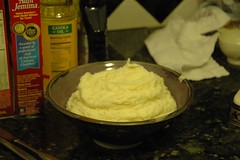Sorry we're a little late on this item

Perseid Meteor Shower Peaks Tuesday Morning
By Robert Roy Britt
Senior Science Writer
posted: 11 August 2008
09:26 am ET
The annual Perseid meteor shower is expected to put on a good display of shooting stars in the pre-dawn hours Tuesday.
The best views will be from rural locations away from light pollution, where up to 60 meteors per hour could be seen, weather permitting. Urban and suburban skywatchers can expect far fewer.
The Perseids are bits of debris left by comet Swift-Tuttle.The debris is like a river of small particles in space, and each year, Earth passes through it. As the bits zoom through our atmosphere at 37 miles per second (60 kps) they vaporize, creating the brilliant streaks of light. Most of the meteors are no larger than a grain of sand.
The shower is typically best between midnight and dawn, when the side of Earth you are standing on is plowing into the stream as our planet plunges through space in its orbit around the sun. It's similar to how bugs hit the windshield of a moving car but rarely smack into the rear bumper.
The annual shower begins as a trickle in mid-July and will continue to spark a handful of shooting stars for several nights to come. But Earth passes through the densest part of the stream Aug. 12 at around 7 a.m. ET (1100 GMT). The moon will set around 1:30 a.m. local time (regardless of your location), leaving the sky dark for a few hours of optimal meteor watching across much of North America.


0 Comments:
Post a Comment
<< Home